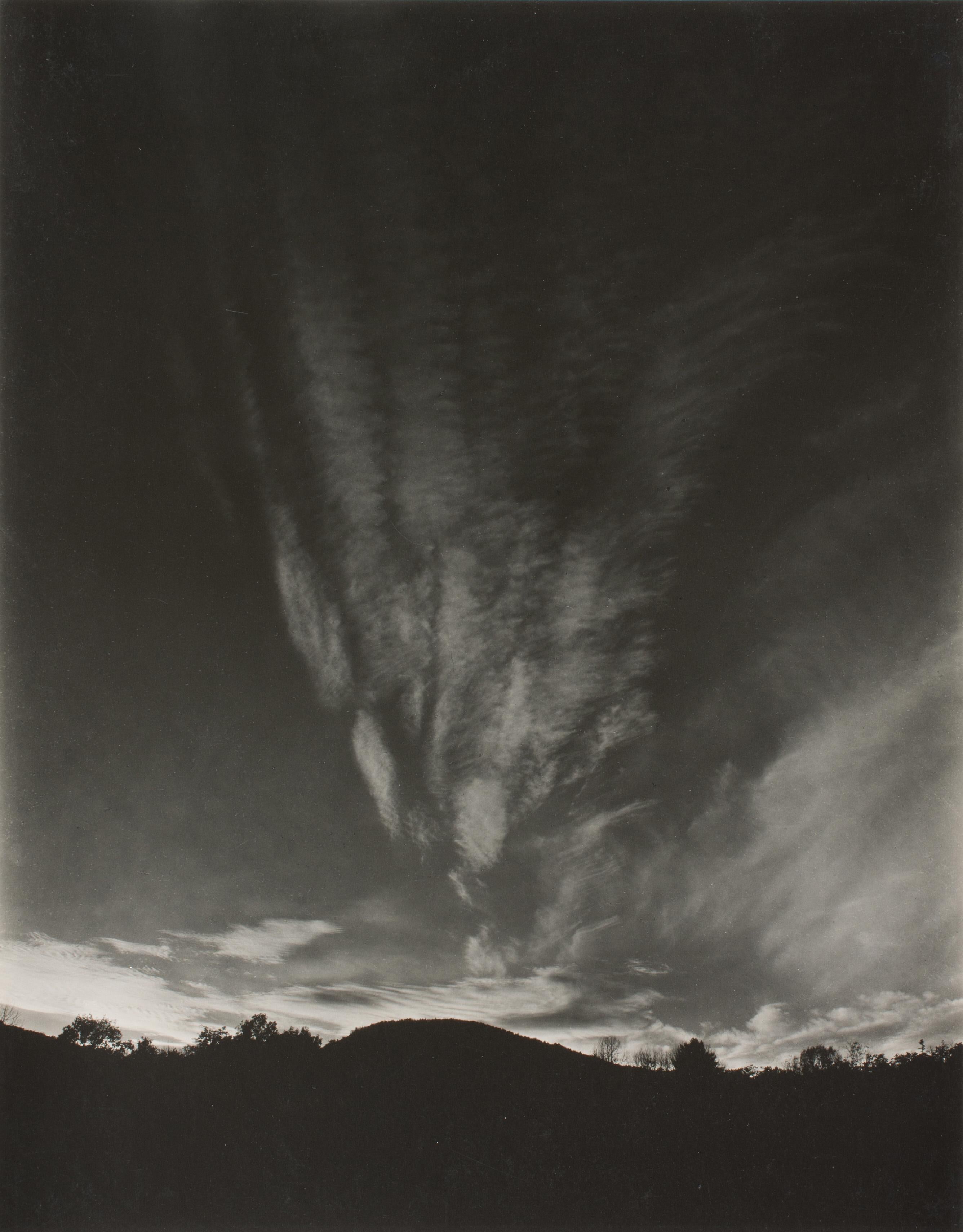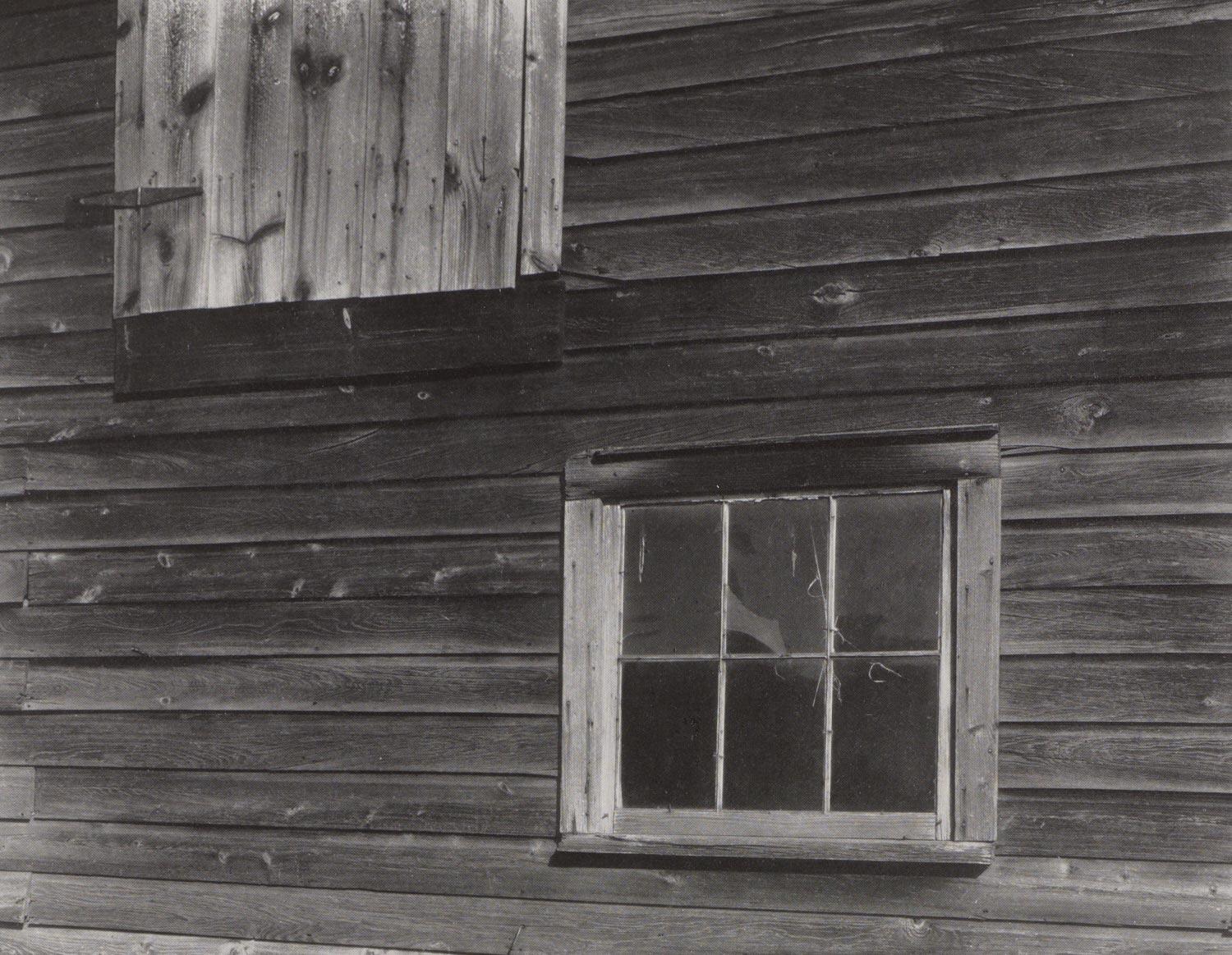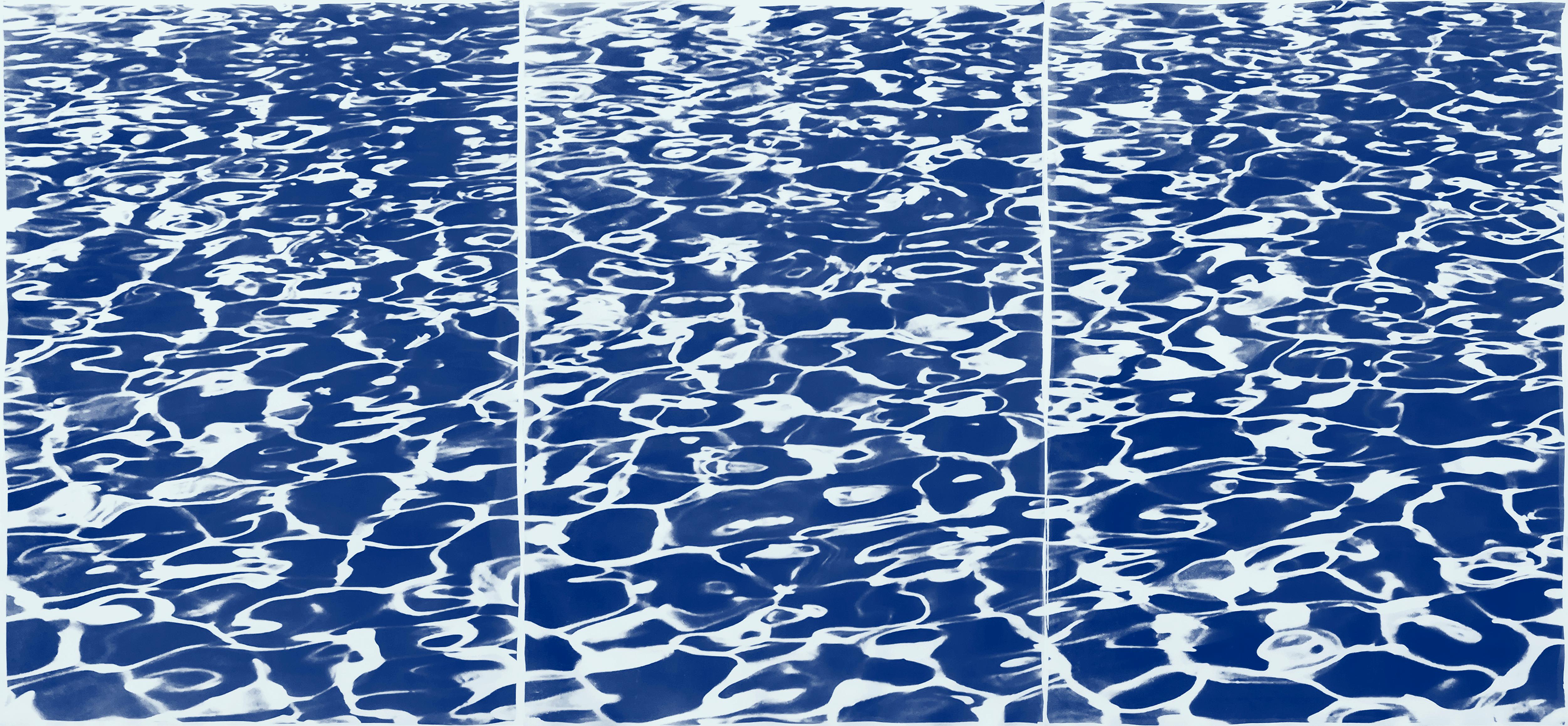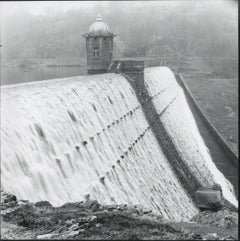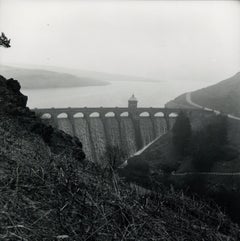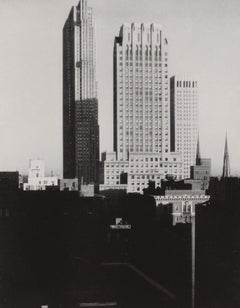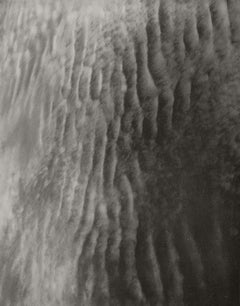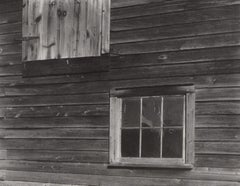Items Similar to Leaning Tower of Pisa: Italy original vintage poster 1958 - Land of Your Dreams
Want more images or videos?
Request additional images or videos from the seller
1 of 5
UnknownLeaning Tower of Pisa: Italy original vintage poster 1958 - Land of Your Dreams1958
1958
About the Item
Pisa, Italy – Land of Your Dreams
EPT, Agaf Firenze, Italy (1958)
40x25inches
Original poster
- Creation Year:1958
- Dimensions:Height: 40 in (101.6 cm)Width: 25 in (63.5 cm)
- Medium:
- Movement & Style:
- Period:
- Condition:Pin-holes to corners; not backed.
- Gallery Location:London, GB
- Reference Number:1stDibs: LU79532676913
About the Seller
4.8
Platinum Seller
These expertly vetted sellers are 1stDibs' most experienced sellers and are rated highest by our customers.
Established in 2014
1stDibs seller since 2017
290 sales on 1stDibs
Typical response time: 2 hours
- ShippingRetrieving quote...Ships From: London, United Kingdom
- Return PolicyA return for this item may be initiated within 14 days of delivery.
Authenticity Guarantee
In the unlikely event there’s an issue with an item’s authenticity, contact us within 1 year for a full refund. DetailsMoney-Back Guarantee
If your item is not as described, is damaged in transit, or does not arrive, contact us within 7 days for a full refund. Details24-Hour Cancellation
You have a 24-hour grace period in which to reconsider your purchase, with no questions asked.Vetted Professional Sellers
Our world-class sellers must adhere to strict standards for service and quality, maintaining the integrity of our listings.Price-Match Guarantee
If you find that a seller listed the same item for a lower price elsewhere, we’ll match it.Trusted Global Delivery
Our best-in-class carrier network provides specialized shipping options worldwide, including custom delivery.More From This Seller
View AllSuisse - Chutes du Rhin - Rheinfall - Waterfalls: 1925 Swiss original poster
Located in London, GB
Suisse
Chutes du Rhin
Original lithographic poster (1925)
40x25"
Category
1920s Photorealist Landscape Photography
Materials
Lithograph
$629 Sale Price
43% Off
Rosemary Ellis Pool II Gelatin Silver Photograph Print proof for book
By Rosemary Ellis
Located in London, GB
We acquired a series of photographs from Rosemary Ellis's studio. To find more from this series scroll down to "More from this Seller" and below it click on "See all from this Seller...
Category
1970s Surrealist Black and White Photography
Materials
Silver Gelatin
Rosemary Ellis Dam III Gelatin Silver Photograph Proof Print for Bodley Head
By Rosemary Ellis
Located in London, GB
We acquired a series of photographs from Rosemary Ellis's studio. To find more from this series scroll down to "More from this Seller" and below it click on "See all from this Seller...
Category
1970s Surrealist Black and White Photography
Materials
Silver Gelatin
Rosemary Ellis Dam II Silver Gelatin Print Photograph for book: Pipes and Wires
By Rosemary Ellis
Located in London, GB
Rosemary Ellis
Dam II
Original photography for Pipes and Wires in the Outlooks and Insights series published by Bodley Head, composed by Rosemary & Charlotte Ellis.
Silver Gelatin Ph...
Category
1970s Surrealist Black and White Photography
Materials
Silver Gelatin
Rosemary Ellis Windows XVI Gelatin Silver Photograph Print for book: Windows
By Rosemary Ellis
Located in London, GB
We acquired a series of photographs from Rosemary Ellis's studio. To find more from this series scroll down to "More from this Seller" and below it click on "See all from this Seller...
Category
1970s Surrealist Black and White Photography
Materials
Silver Gelatin
Rosemary Ellis Dam V Gelatin Silver Photograph Print for book: Pipes and Wires
By Rosemary Ellis
Located in London, GB
We acquired a series of photographs from Rosemary Ellis's studio. To find more from this series scroll down to "More from this Seller" and below it click on "See all from this Seller...
Category
1970s Surrealist Black and White Photography
Materials
Silver Gelatin
You May Also Like
Pool Patterns, Abstract Water Reflections Triptych, Blue Tones California Style
By Kind of Cyan
Located in Barcelona, ES
This is an exclusive handprinted limited edition of a cyanotype.
This beautiful triptych is called "Fresh California Pool patterns", which shows the semi-abstract movements of light reflecting in a California swimming pool.
Details:
+ Title: Fresh California Pool Patterns
+ Edition Size: only 20
+ Stamped and Certificate of Authenticity provided.
+ Measurements : 100x210 cm (40 x 84 in.)
Each paper measures 100cm x 70cm (about 40 in. x 28 in.) each. , a standard frame size.
+ All cyanotype prints...
Category
2010s Modern Abstract Prints
Materials
Watercolor, Lithograph
Stieglitz, New York Series, Spring, Alfred Stieglitz Memorial Portfolio (after)
By Alfred Stieglitz
Located in Auburn Hills, MI
Halftone photographic print on gloss photographic paper. Unsigned and unnumbered, as issued. Good Condition; never framed or matted. Notes: From the folio, Alfred Stieglitz Memorial Portfolio 1864-1946, 1947. Published by Twice a Year Press, New York; printed by Lakeside Press, Chicago, 1947. Excepted from the folio, edition limited to fifteen-hundred copies. INTRODUCTORY NOTE-AMERICA WITHOUT ALFRED STIEGLITZ, Twice during his life, and now again after his death, the compelling and magnetic personality of Alfred Stieglitz has evoked spontaneous group tribute. In America and Alfred Stieglitz, as in the earlier and memorable No. 47 of Camera Work, the elusive question: What is the meaning of Stieglitz? was posed. In both volumes—as in so much other writing about him-it was answered in as many ways as there were artists, writers, composers-individuals in all fields of endeavor attempting to "explain" him. Indeed, the meaning and influence of Stieglitz as artist, patron, teacher, inspirer, friend, critic, were so vastly complex, it may be that no single estimate of him could at any point fully cover all facets of his character. Thus it may be both inevitable and particularly fitting that a memorial volume to him should also be in the form of a group tribute the more so since he himself so firmly believed that no matter how diligently one attempts to evaluate the meaning of any individual or work of art (or life itself for that matter) there can never be one single interpretation, one single estimate that can be viewed as absolute or final. That tribute should be paid by a group is fitting for still another reason, for although Stieglitz was ostensibly a great individualist, no one believed more firmly than did he in the idea that individuals dedicated to the same ends should come together and work together for a common purpose each leaving the other free to say his say without interference. In reading over the tributes now published in this portfolio as they have been received, I have felt what I always feel about any writing concerning Stieglitz that is born of deep feeling: That those who are moved to write about him invariably do so more from a desire to share a sense of wonder about him, than actually to "explain" his meaning or importance. This again is as it should be, for Stieglitz's entire life was dedicated to the sense of wonder-his own, as well as that of others. There were those who scoffed at the title "America and Alfred Stieglitz" when the volume bearing that name first appeared (the inference having been that those responsible for it overestimated Stinglitz's importance). The question now is-What of America without Alfred Stieglitz? What has gone out of our lives now that Stieglitz is no longer here? For certainly we have suffered a great and abiding loss in his death. And although America is infinitely richer for his having lived, it is not quite the same now that he is gone. Certainly there is no one in this country now standing up for the arts in precisely the manner in which Stieglitz stood up for them. There is no one now fighting as he fought to keep art from being regarded as a commodity. There is no gallery in America at this moment whose spirit and approach are even remotely related to the spirit of "291," the Intimate Gallery, An American Place. Wherever Stieglitz functioned there was a sacred feeling about the artist, about the work of art, about the cleanliness of walls, about those seeking art. There is now no one photographing as he photographed; no one speaking as he spoke. America without Alfred Stieglitz is indeed changed subtly but incontrovertibly changed. This portfolio is published to re-evoke the tradition in which he lived. It is issued as a labor of love, in tribute to a great and lovable man, in deep sadness that he is no longer alive and in dedication to the principles for which he stood, and the spirit in which he worked. The tributes received have been printed without editing, except for corrections of important errors of fact. They express the views of their authors; they are inevitably as much portraits of their authors as of their subject. I have included excerpts from a few letters received after Stieglitz's death, which, although not written for publication, seem somehow to belong; various pieces written about Stieglitz some time ago by those who would surely have contributed related tributes now, had they not died within recent years; several articles meant for this portfolio but already published elsewhere; a cross-section of obituaries and memorial pieces from leading newspapers and journals; a few tributes received after the portfolio was planned, at the request of their authors. As for the decision to include reproductions of Stieglitz's photographs: As with all attempts to reproduce his work, I have felt a certain degree of hesitation. Although he disliked very much having his work reproduced, he would, in general, permit reproductions to be published when requested. I have attempted to procure the best approximation of his work that could be made in America at this time. To those who believe it
unfitting to reproduce Stieglitz's work at all, or that one should wait to do so until conditions are perfect, I can only state this: Stieglitz was indeed a great perfectionist, but he spoke out vigorously against making such a fetish of perfectionism that one might finally do nothing whatsoever in behalf of the very things about which one claims to care the most. Years ago he wrote to someone who asked to reproduce his work: "My photographs do not lend themselves to reproduction. The very qualities that give them their life would be completely lost in reproduction. The quality of touch in its deepest living sense is inherent in my photographs. When that sense of touch is lost, the heartbeat of the photograph is extinct. In the reproduction it would become extinct dead. My interest is in the living. That is why cannot give permission to reproduce my photographs." He wrote this, despite giving permission to reproduce his work many times both before and after the statement was written. At another time he wrote: "As for reproductions, I feel that if the spirit of the original is lost, nothing is preserved. My work might be reproduced if properly interpreted, that is, the spirit might be preserved. Of course, some of the things can't possibly be reproduced for obvious reasons. Above all, the reproductions must have a clean feeling— an absolute integrity of their own."
Aware of these feelings and despite the paradox that he so often granted permission to reproduce his work in spite of them—wish to make it clear that the reproductions herewith included are in no sense offered as substitutes for Stieglitz originals. They are published rather as a reminder of the originals themselves. In concentrating so intently upon the fostering of other artists, Stieglitz paid far too little attention to seeing that his own work might be better known to the general public. It is high time that this situation was remedied. To print a mere twenty reproductions, in the light of the enormous scope of Stieglitz's work, is also not to suggest that this portfolio represents a true "cross-section" of his work. All that could be done under the present circumstances was to choose a few representative prints, from various periods, that might possibly be reproduced without losing too much of the form of the originals, and thereby show at least the general direction in which Stieglitz's work evolved even though obviously only in a cursory-and therefore perhaps misleading-fashion. But if the inclusion of these few reproductions should do nothing more than lead those who see them to the originals, their publication may be justified. In the final analysis, in paying tribute to Stieglitz one cannot help but wish-first and foremost-to enable his contribution as an artist to speak for itself. For his contribution as photographer will live on—as symbol and portrait of all that he stood for, envisioned, created, expressed-quite independently of whatever else he fostered and inspired. And that contribution is one of the greatest in the world of art in our time. —Dorothy Norman...
Category
1940s Modern Black and White Photography
Materials
Lithograph
Stieglitz, Equivalent, Series 107, Alfred Stieglitz Memorial Portfolio (after)
By Alfred Stieglitz
Located in Auburn Hills, MI
Halftone photographic print on gloss photographic paper. Unsigned and unnumbered, as issued. Good Condition; never framed or matted. Notes: From the folio, Alfred Stieglitz Memorial Portfolio 1864-1946, 1947. Published by Twice a Year Press, New York; printed by Lakeside Press, Chicago, 1947. Excepted from the folio, edition limited to fifteen-hundred copies. INTRODUCTORY NOTE-AMERICA WITHOUT ALFRED STIEGLITZ, Twice during his life, and now again after his death, the compelling and magnetic personality of Alfred Stieglitz has evoked spontaneous group tribute. In America and Alfred Stieglitz, as in the earlier and memorable No. 47 of Camera Work, the elusive question: What is the meaning of Stieglitz? was posed. In both volumes—as in so much other writing about him-it was answered in as many ways as there were artists, writers, composers-individuals in all fields of endeavor attempting to "explain" him. Indeed, the meaning and influence of Stieglitz as artist, patron, teacher, inspirer, friend, critic, were so vastly complex, it may be that no single estimate of him could at any point fully cover all facets of his character. Thus it may be both inevitable and particularly fitting that a memorial volume to him should also be in the form of a group tribute the more so since he himself so firmly believed that no matter how diligently one attempts to evaluate the meaning of any individual or work of art (or life itself for that matter) there can never be one single interpretation, one single estimate that can be viewed as absolute or final. That tribute should be paid by a group is fitting for still another reason, for although Stieglitz was ostensibly a great individualist, no one believed more firmly than did he in the idea that individuals dedicated to the same ends should come together and work together for a common purpose each leaving the other free to say his say without interference. In reading over the tributes now published in this portfolio as they have been received, I have felt what I always feel about any writing concerning Stieglitz that is born of deep feeling: That those who are moved to write about him invariably do so more from a desire to share a sense of wonder about him, than actually to "explain" his meaning or importance. This again is as it should be, for Stieglitz's entire life was dedicated to the sense of wonder-his own, as well as that of others. There were those who scoffed at the title "America and Alfred Stieglitz" when the volume bearing that name first appeared (the inference having been that those responsible for it overestimated Stinglitz's importance). The question now is-What of America without Alfred Stieglitz? What has gone out of our lives now that Stieglitz is no longer here? For certainly we have suffered a great and abiding loss in his death. And although America is infinitely richer for his having lived, it is not quite the same now that he is gone. Certainly there is no one in this country now standing up for the arts in precisely the manner in which Stieglitz stood up for them. There is no one now fighting as he fought to keep art from being regarded as a commodity. There is no gallery in America at this moment whose spirit and approach are even remotely related to the spirit of "291," the Intimate Gallery, An American Place. Wherever Stieglitz functioned there was a sacred feeling about the artist, about the work of art, about the cleanliness of walls, about those seeking art. There is now no one photographing as he photographed; no one speaking as he spoke. America without Alfred Stieglitz is indeed changed subtly but incontrovertibly changed. This portfolio is published to re-evoke the tradition in which he lived. It is issued as a labor of love, in tribute to a great and lovable man, in deep sadness that he is no longer alive and in dedication to the principles for which he stood, and the spirit in which he worked. The tributes received have been printed without editing, except for corrections of important errors of fact. They express the views of their authors; they are inevitably as much portraits of their authors as of their subject. I have included excerpts from a few letters received after Stieglitz's death, which, although not written for publication, seem somehow to belong; various pieces written about Stieglitz some time ago by those who would surely have contributed related tributes now, had they not died within recent years; several articles meant for this portfolio but already published elsewhere; a cross-section of obituaries and memorial pieces from leading newspapers and journals; a few tributes received after the portfolio was planned, at the request of their authors. As for the decision to include reproductions of Stieglitz's photographs: As with all attempts to reproduce his work, I have felt a certain degree of hesitation. Although he disliked very much having his work reproduced, he would, in general, permit reproductions to be published when requested. I have attempted to procure the best approximation of his work that could be made in America at this time. To those who believe it
unfitting to reproduce Stieglitz's work at all, or that one should wait to do so until conditions are perfect, I can only state this: Stieglitz was indeed a great perfectionist, but he spoke out vigorously against making such a fetish of perfectionism that one might finally do nothing whatsoever in behalf of the very things about which one claims to care the most. Years ago he wrote to someone who asked to reproduce his work: "My photographs do not lend themselves to reproduction. The very qualities that give them their life would be completely lost in reproduction. The quality of touch in its deepest living sense is inherent in my photographs. When that sense of touch is lost, the heartbeat of the photograph is extinct. In the reproduction it would become extinct dead. My interest is in the living. That is why cannot give permission to reproduce my photographs." He wrote this, despite giving permission to reproduce his work many times both before and after the statement was written. At another time he wrote: "As for reproductions, I feel that if the spirit of the original is lost, nothing is preserved. My work might be reproduced if properly interpreted, that is, the spirit might be preserved. Of course, some of the things can't possibly be reproduced for obvious reasons. Above all, the reproductions must have a clean feeling— an absolute integrity of their own."
Aware of these feelings and despite the paradox that he so often granted permission to reproduce his work in spite of them—wish to make it clear that the reproductions herewith included are in no sense offered as substitutes for Stieglitz originals. They are published rather as a reminder of the originals themselves. In concentrating so intently upon the fostering of other artists, Stieglitz paid far too little attention to seeing that his own work might be better known to the general public. It is high time that this situation was remedied. To print a mere twenty reproductions, in the light of the enormous scope of Stieglitz's work, is also not to suggest that this portfolio represents a true "cross-section" of his work. All that could be done under the present circumstances was to choose a few representative prints, from various periods, that might possibly be reproduced without losing too much of the form of the originals, and thereby show at least the general direction in which Stieglitz's work evolved even though obviously only in a cursory-and therefore perhaps misleading-fashion. But if the inclusion of these few reproductions should do nothing more than lead those who see them to the originals, their publication may be justified. In the final analysis, in paying tribute to Stieglitz one cannot help but wish-first and foremost-to enable his contribution as an artist to speak for itself. For his contribution as photographer will live on—as symbol and portrait of all that he stood for, envisioned, created, expressed-quite independently of whatever else he fostered and inspired. And that contribution is one of the greatest in the world of art in our time. —Dorothy Norman...
Category
1940s Modern Black and White Photography
Materials
Lithograph
Stieglitz, Barn, Lake George, Alfred Stieglitz Memorial Portfolio (after)
By Alfred Stieglitz
Located in Auburn Hills, MI
Halftone photographic print on gloss photographic paper. Unsigned and unnumbered, as issued. Good Condition; never framed or matted. Notes: From the folio, Alfred Stieglitz Memorial ...
Category
1940s Modern Black and White Photography
Materials
Lithograph
Stieglitz, Evening from the Shelton, Alfred Stieglitz Memorial Portfolio (after)
By Alfred Stieglitz
Located in Auburn Hills, MI
Halftone photographic print on gloss photographic paper. Unsigned and unnumbered, as issued. Good Condition; never framed or matted. Notes: From the folio, Alfred Stieglitz Memorial Portfolio 1864-1946, 1947. Published by Twice a Year Press, New York; printed by Lakeside Press, Chicago, 1947. Excepted from the folio, edition limited to fifteen-hundred copies. INTRODUCTORY NOTE-AMERICA WITHOUT ALFRED STIEGLITZ, Twice during his life, and now again after his death, the compelling and magnetic personality of Alfred Stieglitz has evoked spontaneous group tribute. In America and Alfred Stieglitz, as in the earlier and memorable No. 47 of Camera Work, the elusive question: What is the meaning of Stieglitz? was posed. In both volumes—as in so much other writing about him-it was answered in as many ways as there were artists, writers, composers-individuals in all fields of endeavor attempting to "explain" him. Indeed, the meaning and influence of Stieglitz as artist, patron, teacher, inspirer, friend, critic, were so vastly complex, it may be that no single estimate of him could at any point fully cover all facets of his character. Thus it may be both inevitable and particularly fitting that a memorial volume to him should also be in the form of a group tribute the more so since he himself so firmly believed that no matter how diligently one attempts to evaluate the meaning of any individual or work of art (or life itself for that matter) there can never be one single interpretation, one single estimate that can be viewed as absolute or final. That tribute should be paid by a group is fitting for still another reason, for although Stieglitz was ostensibly a great individualist, no one believed more firmly than did he in the idea that individuals dedicated to the same ends should come together and work together for a common purpose each leaving the other free to say his say without interference. In reading over the tributes now published in this portfolio as they have been received, I have felt what I always feel about any writing concerning Stieglitz that is born of deep feeling: That those who are moved to write about him invariably do so more from a desire to share a sense of wonder about him, than actually to "explain" his meaning or importance. This again is as it should be, for Stieglitz's entire life was dedicated to the sense of wonder-his own, as well as that of others. There were those who scoffed at the title "America and Alfred Stieglitz" when the volume bearing that name first appeared (the inference having been that those responsible for it overestimated Stinglitz's importance). The question now is-What of America without Alfred Stieglitz? What has gone out of our lives now that Stieglitz is no longer here? For certainly we have suffered a great and abiding loss in his death. And although America is infinitely richer for his having lived, it is not quite the same now that he is gone. Certainly there is no one in this country now standing up for the arts in precisely the manner in which Stieglitz stood up for them. There is no one now fighting as he fought to keep art from being regarded as a commodity. There is no gallery in America at this moment whose spirit and approach are even remotely related to the spirit of "291," the Intimate Gallery, An American Place. Wherever Stieglitz functioned there was a sacred feeling about the artist, about the work of art, about the cleanliness of walls, about those seeking art. There is now no one photographing as he photographed; no one speaking as he spoke. America without Alfred Stieglitz is indeed changed subtly but incontrovertibly changed. This portfolio is published to re-evoke the tradition in which he lived. It is issued as a labor of love, in tribute to a great and lovable man, in deep sadness that he is no longer alive and in dedication to the principles for which he stood, and the spirit in which he worked. The tributes received have been printed without editing, except for corrections of important errors of fact. They express the views of their authors; they are inevitably as much portraits of their authors as of their subject. I have included excerpts from a few letters received after Stieglitz's death, which, although not written for publication, seem somehow to belong; various pieces written about Stieglitz some time ago by those who would surely have contributed related tributes now, had they not died within recent years; several articles meant for this portfolio but already published elsewhere; a cross-section of obituaries and memorial pieces from leading newspapers and journals; a few tributes received after the portfolio was planned, at the request of their authors. As for the decision to include reproductions of Stieglitz's photographs: As with all attempts to reproduce his work, I have felt a certain degree of hesitation. Although he disliked very much having his work reproduced, he would, in general, permit reproductions to be published when requested. I have attempted to procure the best approximation of his work that could be made in America at this time. To those who believe it
unfitting to reproduce Stieglitz's work at all, or that one should wait to do so until conditions are perfect, I can only state this: Stieglitz was indeed a great perfectionist, but he spoke out vigorously against making such a fetish of perfectionism that one might finally do nothing whatsoever in behalf of the very things about which one claims to care the most. Years ago he wrote to someone who asked to reproduce his work: "My photographs do not lend themselves to reproduction. The very qualities that give them their life would be completely lost in reproduction. The quality of touch in its deepest living sense is inherent in my photographs. When that sense of touch is lost, the heartbeat of the photograph is extinct. In the reproduction it would become extinct dead. My interest is in the living. That is why cannot give permission to reproduce my photographs." He wrote this, despite giving permission to reproduce his work many times both before and after the statement was written. At another time he wrote: "As for reproductions, I feel that if the spirit of the original is lost, nothing is preserved. My work might be reproduced if properly interpreted, that is, the spirit might be preserved. Of course, some of the things can't possibly be reproduced for obvious reasons. Above all, the reproductions must have a clean feeling— an absolute integrity of their own."
Aware of these feelings and despite the paradox that he so often granted permission to reproduce his work in spite of them—wish to make it clear that the reproductions herewith included are in no sense offered as substitutes for Stieglitz originals. They are published rather as a reminder of the originals themselves. In concentrating so intently upon the fostering of other artists, Stieglitz paid far too little attention to seeing that his own work might be better known to the general public. It is high time that this situation was remedied. To print a mere twenty reproductions, in the light of the enormous scope of Stieglitz's work, is also not to suggest that this portfolio represents a true "cross-section" of his work. All that could be done under the present circumstances was to choose a few representative prints, from various periods, that might possibly be reproduced without losing too much of the form of the originals, and thereby show at least the general direction in which Stieglitz's work evolved even though obviously only in a cursory-and therefore perhaps misleading-fashion. But if the inclusion of these few reproductions should do nothing more than lead those who see them to the originals, their publication may be justified. In the final analysis, in paying tribute to Stieglitz one cannot help but wish-first and foremost-to enable his contribution as an artist to speak for itself. For his contribution as photographer will live on—as symbol and portrait of all that he stood for, envisioned, created, expressed-quite independently of whatever else he fostered and inspired. And that contribution is one of the greatest in the world of art in our time. —Dorothy Norman...
Category
1940s Modern Black and White Photography
Materials
Lithograph
Stieglitz, Mountains and Sky, Alfred Stieglitz Memorial Portfolio (after)
By Alfred Stieglitz
Located in Auburn Hills, MI
Halftone photographic print on gloss photographic paper. Unsigned and unnumbered, as issued. Good Condition; never framed or matted. Notes: From the folio, Alfred Stieglitz Memorial ...
Category
1940s Modern Black and White Photography
Materials
Lithograph
Recently Viewed
View AllMore Ways To Browse
Vintage Italian Posters
Italian Landscape Lithograph
Pisa Tower
Tower Of Pisa
Leaning Tower Of Pisa
Art Exhibition Poster Paris
American Bronze Sculpture
New York Mirrors
Antique German Prints
Antique Prints Germany
Dior 1980
Japan 1990
Oil On Canvas Gilt Frame
La Main
Surrealist Lithograph
Mid Century Modern Signed Print
Sculpture Miami
Japanese Print Original
